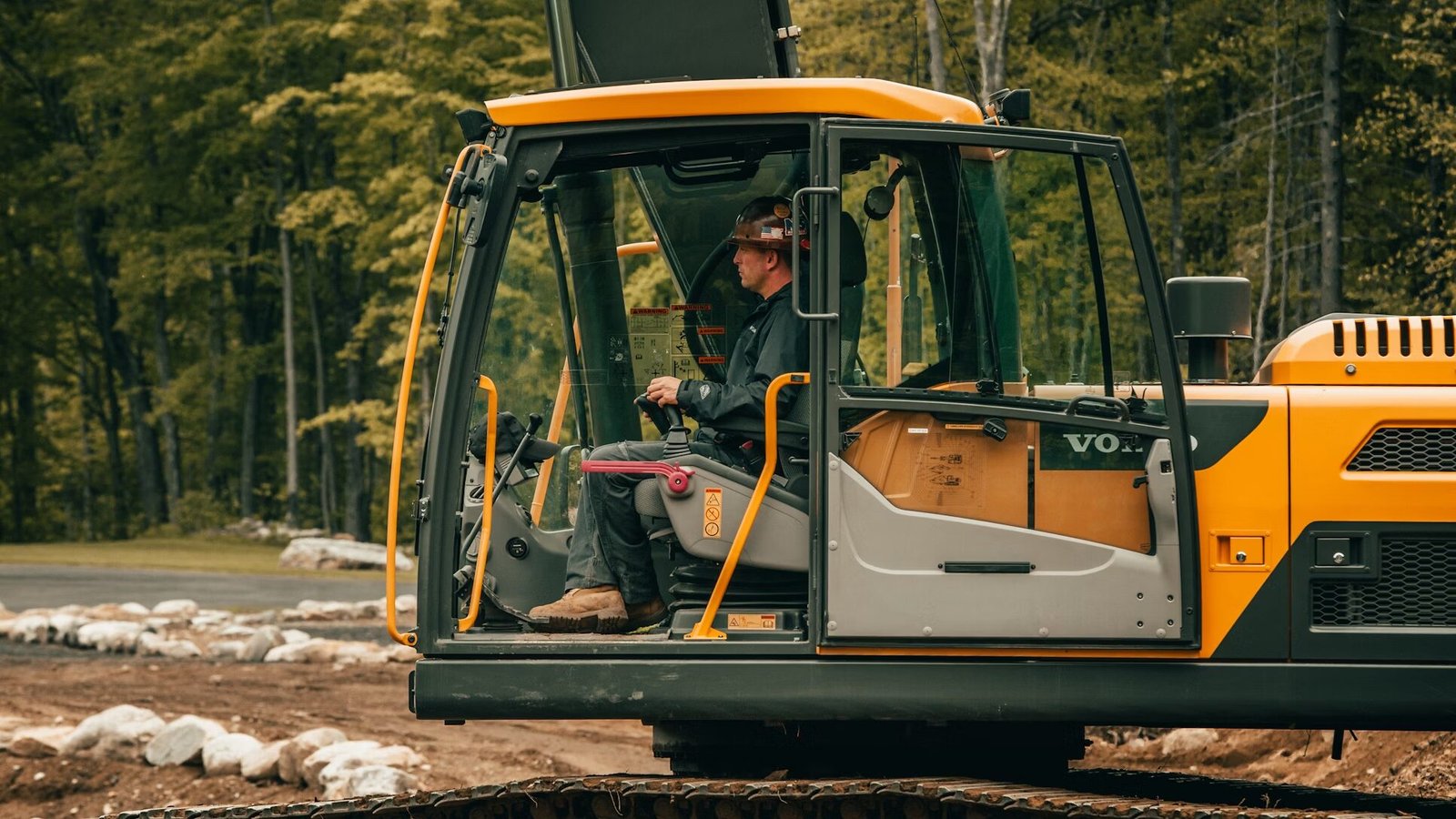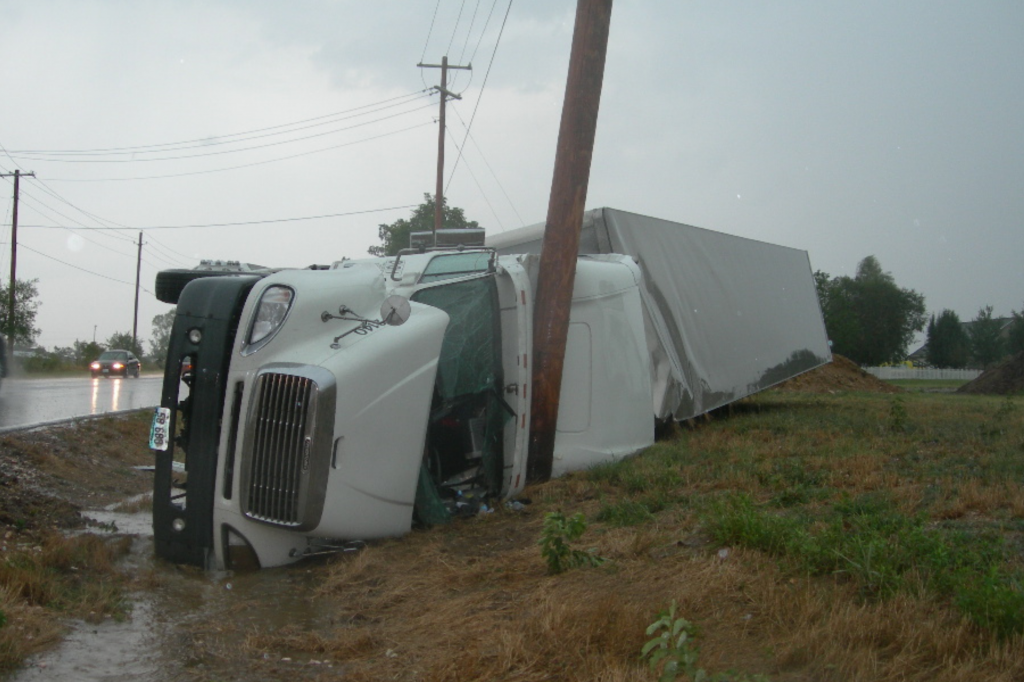Blog
How to Build a Successful Career as a General Contractor in Florida: A Step-by-Step Guide

Becoming a general contractor in Florida is a rewarding career path, offering vast opportunities in the construction industry. It requires a blend of technical knowledge, business acumen, and a strong understanding of local regulations. Whether you’re just starting or looking to enhance your skills, following the right steps can set you up for success. This guide’ll walk you through the essential steps to build a thriving career as a general contractor in Florida. Prepare with AtHomePrep to ensure you have the knowledge and tools to pass the exam and get licensed.
Step 1: Understand the Role of a General Contractor
The general contractor supervises construction projects throughout their entire lifecycle. General contractors handle budget planning together with deadline management and supervision of subcontractors. Florida allows general contractors to handle construction work on houses and buildings for business and factories. Success in this field requires three essential elements: leadership abilities, meticulousness, and complete knowledge of building rules.
Step 2: Meet the Licensing Requirements
Acquiring a general contractor license in Florida is essential for working within the state. The licensing process for general contractors falls under the supervision of the Florida Department of Business and Professional Regulation (DBPR). You must fulfill particular experience requirements to qualify for this position, combining educational and practical construction experience. Most applicants need to demonstrate four years of experience in construction work while showing one year of supervisory experience.
Step 3: Gain Practical Experience
Experience plays an essential role in developing successful skills for general contractors. Working with different construction aspects remains necessary for developing practical experience. Your first step should be to join the workforce as a laborer or tradesperson to understand fundamental building principles. Your progression toward supervisory positions should begin with additional responsibilities until you reach positions such as foreman or project manager. The experience will provide essential practical project management skills while creating professional contacts supporting your career development.
Step 4: Take the Licensing Exam
The Florida general contractor exam is an essential requirement for obtaining your license as a professional. A broad set of knowledge points, including building codes, laws and regulations, and contract management and safety protocols, make up the content of the licensing exam. Students must spend sufficient study time before the exam to succeed during their first attempt. AtHomePrep’s structured study plan gives you all the necessary resources to study the examination material effectively. Their assistance will help you earn your license by providing you with confidence and exam knowledge.
Step 5: Start Your Own Business or Join a Firm
Completing the licensing exam lets you begin your contracting business or join an established contracting firm. Starting your business requires insurance, a bond, and additional business licenses. Developing a detailed business plan is essential because it outlines your objectives, services, and financial predictions. A strategic business plan functions as your business direction while providing critical information for making decisions throughout your expansion. When you choose to work for an established firm, you will have the opportunity to develop your expertise while accumulating projects demonstrating your accomplishments.
Step 6: Build a Strong Reputation
A solid reputation within the general contractor industry will lead to enduring business success. The construction business relies heavily on word-of-mouth recommendations because you must deliver outstanding customer service and on-time, quality work that stays within budget. Your business stability depends on maintaining solid connections between clients, subcontractors, and suppliers. Your reputation will strengthen when you offer warranties on your work because they reassure clients and establish your contractor status as dependable.
Step 7: Stay Current with Industry Trends
The construction industry continuously transforms because new technological innovations, building materials, and construction approaches become available frequently. The key to staying competitive in your field demands continuous knowledge of modern industry patterns and innovations. To maintain your skill proficiency, participate in industry conferences, read trade publications, and spend money on continuing education.
General contractors with specialized certifications in specific areas like green building and energy-efficient construction gain enhanced expertise, which benefits their business operations. Your industry knowledge serves two purposes: it keeps you modern and relevant while creating chances for professional advancement.
Step 8: Manage Finances Effectively
A general contractor needs to manage their finances effectively to achieve career success. Business owners and contractors must handle their financial flow while monitoring expenses and adequately paying taxes. General contractors commonly achieve better financial organization through working with accounting professionals. Budget for upcoming construction ventures and unforeseen emergencies because construction projects tend to be challenging to predict.
Step 9: Expand Your Network and Grow Your Business
Your career advancement requires ongoing development of relationships with other industry professionals. Networking provides multiple benefits, including discovering new clients while finding suitable subcontractors and maintaining industry leadership. Local construction associations offer membership opportunities to join with trade shows available for attendance and partnership opportunities with architects, engineers, and other contractors.
Conclusion
A general contractor must dedicate themselves to hard work and continuous learning to build success in their Florida career. You can reach your general contractor goals by understanding the role of this position, completing licensing requirements, acquiring experience, and preparing for exams using AtHomePrep resources. The right skills and knowledge enable you to establish a reputation for delivering high-quality work, which paves the way to leadership within the Florida construction industry.
Blog
Beneath the Surface: How Smart Wastewater Is Quietly Transforming Rural Living

Amid the modern migration to rural areas and small towns, a technological transformation is quietly taking root underground—literally. In places where centralized sewer infrastructure remains out of reach, the everyday operation of septic systems has long been a background affair. Now, invisible innovations and digital tools are reshaping these vital systems, making wastewater treatment smarter, safer, and more precise. This new era is fueled not by promotion, but by tectonic shifts in design, data monitoring, and environmental stewardship. Homeowners, local officials, and environmental advocates are all taking notice.
Among the most significant drivers of change is the rise of digital monitoring in residential wastewater infrastructure. Well beyond the traditional inspection schedule, new smart sensors measure tank depth, effluent quality, and flow rates in real time, alerting residents and professionals to potential problems before they become costly emergencies. These smart systems are becoming especially pertinent as regulatory standards grow more rigorous and as climate uncertainty prompts rural communities to reevaluate the resilience of their infrastructure.
Integrating these smart solutions often begins with a septic tank upgrade, though the digital leap isn’t only about equipment. Using real-time data fosters proactive system care: maintenance becomes predictive rather than reactive, and the risk of groundwater contamination falls. As intelligent infrastructure tracks each tank’s status, it offers more than peace of mind; it fundamentally shifts how rural homes relate to their natural surroundings and resources.
The Environmental Angle
The digital revolution complements a simultaneous shift in ecological stewardship. Eco- friendly tank designs, advanced aerobic treatment units, and constructed wetlands are now part of the rural septic landscape. Many innovations aim to reduce energy consumption with solar-powered components and reduce nutrient pollution by improving the breakdown of nitrogen and phosphorus. These green upgrades comply with new regulations—they safeguard local ecosystems, from groundwater to rivers downstream.
In particular, adopting constructed wetlands, which filter wastewater through native plants and engineered soil beds, marks a profound change. These systems convert conventional drainfields into living treatment zones that enhance landscape beauty and water quality.
Such ecological solutions pair seamlessly with sensor-driven smart tanks to form “hybrid”
systems: nature and technology operating side by side, quietly protecting the local environment.
Community Data and Resilience
What’s emerging is not simply a collection of upgraded tanks, but a growing network—an underground infrastructure that offers big-picture benefits for rural communities. Data collected by smart septic systems can be aggregated (securely and anonymously) to reveal trends, such as whether groundwater levels are falling or if seasonal weather patterns are influencing septic system strain. With such knowledge, communities can better prepare for droughts, floods, or surges in population.
This collaborative approach moves septic care from an individual responsibility to a shared community asset. Public health officials and local planners can work with real numbers rather than educated guesses, targeting resources where they’re most needed.
Looking Forward
As climate risks make water infrastructure increasingly vulnerable, the convergence of ecological innovation and smart technology is changing what it means to be self-sufficient in rural America. The once-static septic tank is becoming a node in a living network— responsive, adaptive, and quietly essential.
For homeowners in rural areas, considering a septic tank upgrade is no longer just about maintenance; it’s about joining a larger movement toward resilient, mindful living. The invisible work of smart wastewater systems is reshaping underground infrastructure into something modern and deeply rooted in environmental consciousness. In this new era, rural resilience is not a promotional promise, but a quietly unfolding reality—one sensor, one wetland, one household at a time.
Blog
Tips for Gathering Evidence After a Commercial Vehicle Collision

People know New Mexico for its busy highways, open roadways, and desert scenery. Every day, a lot of trucks and other commercial vehicles drive through the state, which means that accidents can and do happen. A collision with a big truck can be quite bad.
If you are involved in a crash with a commercial vehicle, collecting the right evidence is very important. This is especially true when investigating New Mexico truck accidents. The more information you have, the better your chances of getting fair compensation for your injuries or damage.
Here are some simple and helpful tips for gathering evidence after a commercial vehicle collision.
Stay Safe First
Before doing anything, make sure you and anyone else involved are safe. If you can, move to a safe area away from traffic. Call 911 immediately to report the accident and ask for medical help if anyone is hurt.
Take Photos and Videos
Pictures and videos can tell what happened exactly. Use your phone to take clear photos of:
- The vehicles involved (from different angles)
- Damage to both vehicles
- The road conditions (wet, dry, cracked, etc.)
- Skid marks or broken glass
- Road signs or signals nearby
- Any injuries you or others have
Videos showing how traffic is flowing or the behavior of the truck driver can also be very helpful.
Get Contact Information
Gather names and contact info from:
- The truck driver
- Any passengers in the other vehicle
- Eyewitnesses who saw the crash
Also, write down the truck driver’s company name, license plate number, and the DOT (Department of Transportation) number on the truck if it’s visible.
Request the Police Report
When police come to the scene, they will make a report. This report is often key evidence. Ask how you can get a copy and write down the officer’s name and badge number. The report can include who they think was at fault and what the driver said.
Keep a Record of Your Injuries
Go to a doctor as soon as possible, even if you feel fine. Some injuries take time to show. Keep copies of all medical records, bills, and doctor’s notes. Write down how you feel each day after the crash. This can help show how the accident has affected your life.
Preserve Evidence from the Truck
Commercial vehicles often have important data stored in their “black box” or onboard computer. These devices can show speed, brake use, and more. A lawyer can help you request this data before it’s lost or erased. The trucking company may also have inspection logs and driver records that can support your case.
Avoid Posting on Social Media
It’s best not to post about the accident on Facebook, Instagram, or other platforms. Insurance companies can use your posts against you. Keep the details private and speak only with your lawyer or doctor about the crash.
Talk to an Attorney Early
Accidents involving trucks are more complex than regular car crashes. Trucking companies have teams of lawyers and insurers. A personal injury attorney who knows about investigating New Mexico truck accidents can help protect your rights and gather strong evidence before it’s too late.
Key Takeaways
- Always focus on safety first after a crash.
- Take photos, get witness info, and gather all records.
- Ask for the police report and keep medical documents.
- Don’t wait too long to seek legal help.
- Truck crash evidence can disappear fast—act quickly.
No one expects to get into a crash with a commercial vehicle. But if it happens, being prepared and knowing what steps to take can make a big difference in your recovery—both physically and financially.
Blog
Traditional Festivals in Modern China

When you learn Mandarin online or studying with an online Chinese teacher, the names of festivals such as 春节 (Spring Festival), 中秋节 (Mid-Autumn Festival), and 端午节 (Dragon Boat Festival) are often among the first pieces of cultural vocabulary encountered. Yet behind these familiar terms lies a long history of ritual practices, social customs, and symbolic meanings that have undergone significant transformation in modern Chinese society.
The Spring Festival, for instance, has always been the most important holiday in China, traditionally marked by ancestral worship, reunion dinners, and symbolic acts to welcome prosperity. In the past, rituals such as offering sacrifices to household gods or setting off firecrackers to ward off evil were central. While some of these customs remain, modernization has altered the festival landscape. Today, the Spring Festival is characterized as much by televised galas, digital 红包 (red envelopes) sent via mobile apps, and mass domestic travel as by traditional family rituals. The meaning of “reunion” persists, but its expression has expanded with technology and urban life.
The Mid-Autumn Festival also illustrates this transformation. Historically associated with moon worship and poetic reflection, its essence was rooted in agricultural cycles and ancient cosmology. Today, while the round mooncake continues to symbolize family unity, the festival is now also celebrated through commercial branding, tourism, and even large-scale public events. Its ancient connotations remain, but they coexist with contemporary interpretations that align with modern lifestyles.
The Dragon Boat Festival similarly demonstrates the adaptability of traditions. Once a ritual of exorcism and seasonal protection, centered on rowing boats to drive away disease and misfortune, it later became associated with commemorating the poet Qu Yuan. In contemporary China, the festival balances heritage activities such as dragon boat racing and eating 粽子 (rice dumplings) with broader cultural celebrations, often promoted as expressions of intangible cultural heritage.
At the language school GoEast Mandarin, discussions of Chinese festivals are essentially taught together with language instruction, ensuring that learners not only memorize terms but also gain an understanding of their evolution and continuing relevance.

 Blog9 months ago
Blog9 months agoHow to Deal with Scabies While Traveling

 Travel9 months ago
Travel9 months agoRichmond, Virginia Street Art Guide

 Travel9 months ago
Travel9 months agoPerhentian Islands: How to Get There, What to Expect, & More

 Travel9 months ago
Travel9 months agoHow to Live in Your Car in New Zealand

 Travel9 months ago
Travel9 months agoSouvenir in Nepal: A Guide to Unique Handicrafts and Cultural Treasures

 Travel9 months ago
Travel9 months agoVegan Guide to Dining Out in Richmond, Virginia

 Food9 months ago
Food9 months agoVegetarian Food Nepal: A Journey into Flavorful Plant-Based Cuisine

 Travel6 months ago
Travel6 months agoA Local’s Guide to Sanibel Island, Florida















